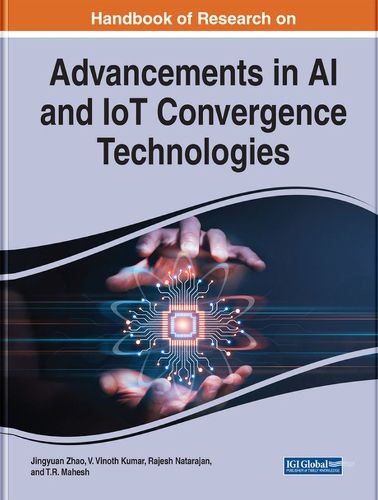Readings Newsletter
Become a Readings Member to make your shopping experience even easier.
Sign in or sign up for free!
You’re not far away from qualifying for FREE standard shipping within Australia
You’ve qualified for FREE standard shipping within Australia
The cart is loading…






This title is printed to order. This book may have been self-published. If so, we cannot guarantee the quality of the content. In the main most books will have gone through the editing process however some may not. We therefore suggest that you be aware of this before ordering this book. If in doubt check either the author or publisher’s details as we are unable to accept any returns unless they are faulty. Please contact us if you have any questions.
Recently, the internet of things (IoT) has brought the vision of a smarter world into reality with a massive amount of data and numerous services. With the outbreak of the COVID-19 pandemic, artificial intelligence (AI) has gained significant attention by utilizing its machine learning algorithms for quality patient care. The integration of IoT with AI may open new possibilities for both technologies and can play a big part in smart healthcare by providing improved insight into healthcare data and allowing for more inexpensive personalized care.
The Handbook of Research on Advancements in AI and IoT Convergence Technologies considers recent advancements in AI and IoT convergence technologies with a focus on state-of-the-art approaches, methodologies, and systems for the design, development, deployment, and innovative use of those convergence technologies. It also provides insight into how to develop AI and IoT convergence techniques to meet industrial demands and covers the emerging research topics that are going to define the future of AI and IoT convergence technology development. Covering key topics such as diseases, smart healthcare, social distance monitoring, and security, this major reference work is ideal for industry professionals, nurses, healthcare workers, computer scientists, policymakers, researchers, scholars, practitioners, instructors, and students.
$9.00 standard shipping within Australia
FREE standard shipping within Australia for orders over $100.00
Express & International shipping calculated at checkout
This title is printed to order. This book may have been self-published. If so, we cannot guarantee the quality of the content. In the main most books will have gone through the editing process however some may not. We therefore suggest that you be aware of this before ordering this book. If in doubt check either the author or publisher’s details as we are unable to accept any returns unless they are faulty. Please contact us if you have any questions.
Recently, the internet of things (IoT) has brought the vision of a smarter world into reality with a massive amount of data and numerous services. With the outbreak of the COVID-19 pandemic, artificial intelligence (AI) has gained significant attention by utilizing its machine learning algorithms for quality patient care. The integration of IoT with AI may open new possibilities for both technologies and can play a big part in smart healthcare by providing improved insight into healthcare data and allowing for more inexpensive personalized care.
The Handbook of Research on Advancements in AI and IoT Convergence Technologies considers recent advancements in AI and IoT convergence technologies with a focus on state-of-the-art approaches, methodologies, and systems for the design, development, deployment, and innovative use of those convergence technologies. It also provides insight into how to develop AI and IoT convergence techniques to meet industrial demands and covers the emerging research topics that are going to define the future of AI and IoT convergence technology development. Covering key topics such as diseases, smart healthcare, social distance monitoring, and security, this major reference work is ideal for industry professionals, nurses, healthcare workers, computer scientists, policymakers, researchers, scholars, practitioners, instructors, and students.